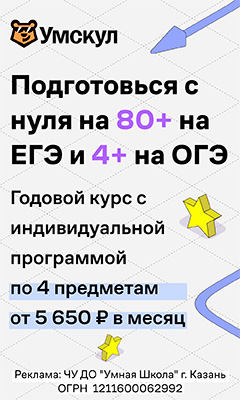- Главная →
- Новости образования на ACADEMICA.RU →
- Новости ВУЗов →
- The third school of the international project L4H
The third school of the international project L4H
Just like in 2020, L4H educational programs are being held online in the form of international groups consisting of participants from each of universities. Students are given access to pre-recorded lectures and are able to remotely communicate with experts from various universities.
During practical seminars the participants are learning to gather, analyze and interpret the collected data. To study the layouts they are given 4 rooms - a patient room, a waiting room/waiting area, a nurses’ station and physiotherapy room. Using simulation software (Dialux, Velux Visualizer, etc.), students are evaluating the lighting conditions and daylight in the studied rooms and answering the following questions: how much light is needed for a particular space and how to achieve this? They are also developing recommendations for improving lighting. Lighting analysis will be carried out taking into account the perception characteristics of various user groups: children, youth, elderly people.
The new Associated Partner Janowicz Architekci (janowicz.pl/wp/) has supported the L4H Project and has provided 4 models for the following rooms: a patient room, a waiting room/waiting area, a nurses’ station,physiotherapy room.
The learning process for the third school takes six weeks and is divided into five training modules. During the first introductory module (March 19 to March 26), students are learning about best practices, special lighting fixtures (TJU-John Hanifin), and design with simulation tools (HSW). Focus is being given to the new health standards at the International Commission on Illumination (CIE) and Illuminating Engineering Society (IES) and different studies covering various cases are being presented.
In the second module (March 26 - April 9), which is dedicated to the topic of "Daylight", participants will be taught about the role of eyesight, daylight standards and its assessment. During the third module (April 9 - April 16), students will explore dynamic and interactive lighting in healthcare facilities. In particular, interesting aspects such as the use of virtual reality in distraction therapy, lighting and autism, VR and autism, lighting control and interfaces will be touched upon. Using the knowledge gained, students will be able to incorporate dynamic lighting elements into their final projects.
Module 4 (April 16 - April 23) will focus on Biofeedback and Measurement Devices (HSW). Students will learn about handheld spectrometers, flicker meters, actigraphy, and eye tracking. The last fifth module (April 23 to May 5) will be devoted to the work on the final group lighting project within the framework of the third summer school. With the help of modeling tools (HSW) and software (Dialux, ALFA, etc.), each group will develop its own lighting concept for the four teaching modules which are based on four 3d models, aimed at preserving the health and well-being of users. The fifth module will end with a final presentation of group projects.
To learn more about Light4Health project, click here: www.light4health.net/
-
10.09
В Петербурге впервые пройдет международный форум «Свет для человека»
17 – 18 октября в Петербурге впервые пройдет ключевое событие в области архитектуры, урбанистики и светового дизайна — первый международный форум «Свет для человека». Ключевой темой станет «Адаптация ...
-
04.06
Сказ о камне путеводном, роботе-баюне и нейрококошнике Царевны-Лебедь
В Петербурге в рамках фестиваля промышленного и медиа дизайна, собравшего свыше 2000 посетителей, в Академии Штиглица состоялся показ цифрового продукта «Сказ о камне путеводном, роботе-баюне, Билибин...
-
21.12
Гала-шоу «Легенды Штиглица»! Выставка победителей конкурса видеомэппинга и светового дизайна!
22 декабря в рамках конкурса молодежного медиаискусства и дизайна в Академии Штиглица будут представлены конкурсные работы победителей в области видеомэппинга и светового дизайна. Также пройдет гала-ш...
-
22.07
Открыт набор на единственную в России программу магистратуры «Световой дизайн» в Академии Штиглица!
Открыт набор на единственную в России программу магистратуры «Световой дизайн» в Академии Штиглица. Если вы интересуетесь возможностью получения образования в сфере светового дизайна, у нас для вас о...
-
02.04
В Петербурге реализуется не имеющий аналогов общественный культурный проект «Живая лаборатория «Digital сцена»
В рамках проекта режиссеры, драматурги и художники-постановщики различных театров С.-Петербурга в сотрудничестве со зрителями создадут уникальные цифровые декорации для театральных спектаклей. Проект...
-
Желаете оставить комментарий?Войти

-
11.09
МБИ имени Анатолия Собчака приглашает школьников на бесплатные мероприятия по профориентации
Международный банковский институт имени Анатолия СобчакаМеждународный банковский институт имени Анатолия Собчака организует серию мероприятий по профессиональной ориентации для учащихся 8–11 классов.
-
10.09
МБИ продолжает набор на очно-заочную и заочную формы бакалавриата
Международный банковский институт имени Анатолия СобчакаПродолжаем набор на очно-заочную и заочную формы бакалавриата до 20 сентября
-
09.09
МБИ продолжает набор на программу Бухгалтерский учет для начинающих
Международный банковский институт имени Анатолия СобчакаПриглашаем всех желающих пройти курс, который поможет приобрести знания и навыки, необходимые для работы бухгалтером. Особенность нашей программы заключается в том, что на протяжении всего обучения с...
-
09.09
МБИ открыл прием документов на программы параллельного обучения «Колледж-Вуз»
Международный банковский институт имени Анатолия СобчакаУспей подать документы до 30 сентября! Приглашаем учащихся колледжей (СПО) на программу параллельного обучения "Колледж-Вуз"
-
08.09
Международный банковский институт продолжает набор в аспирантуру
Международный банковский институт имени Анатолия СобчакаПродолжается прием документов на обучение по аспирантуре на очную форму обучения.

